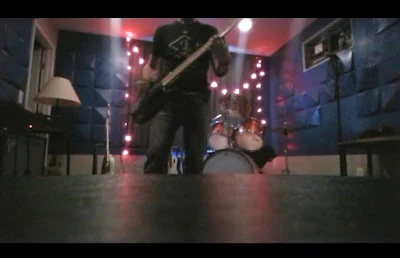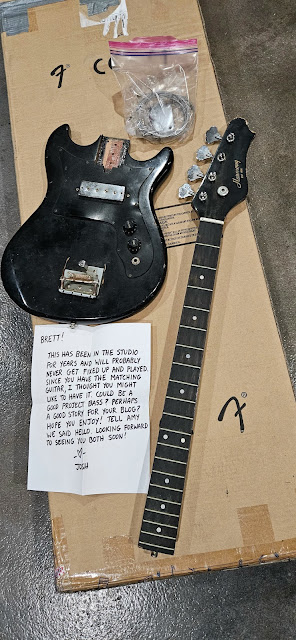My Fellow Patriots...
Sure, post less than once a month, that's one way to keep friends engaged! I plan on wrapping this one up folks, so the next tinker post may be years from now and involve how to dig my own grave. Or how to build hidden bookshelves for a post-second civil war Christian Nationalist america.
It's been so long I can't even remember where I left off. Luckily I can go back and look at the old post! That's right, I was worried about how much fret height was filed off in the leveling process. I must say, it is just fine, but man did those frets have some flat spots! Which can lead to the same buzziness I was having with nubby frets. There is a tool, of course, which is ridiculously expensive, of course, and one guy in one YouTube video convinced me I could do it with a normal file. Of course, he is a pro and I am a guy with a bass that still has some flat spots on his frets. Oh well. Maybe I'll touch it up more, maybe I'll buy the damned file someday, but in the meantime, I have a bass to finish. On with the pictures, they are better than my dumb words anyway.
A couple things worth mentioning: The number stamped in the neck tells me I may have an '86, whereas before I thought it was an '85. More important to the project, however, is the pointy screw and the hole in the neck plate. See, rather than having to shim the neck, like most Fenders, the body of the bass has threads which that pointy screw will go through, push on that round silver plate on the neck near the number, and adjust the tilt. Obviously the screw has dug into it a bit in the past, and I have used a wood shim on this before, but I like the idea of having this closer to its original state. So the screw returns, and works out pretty well if you don't crank down everything too tight.
I'm finding blue loctite to be the most important liquid outside of alcohol lately. Seriously. Bikes, guitars and drums all have parts that vibrate loose. A lot.
The fretless P copy had the worst tuners ever. These are the best tuners I've had on any bass. No name on them, but there are similar ones out there. Love the extra nut on the frontside.
This synthetic bone nut, I am convinced, does give you a bit more sustain than the plastic one you see glued to it as a guide for my files. Quick note: I did file the D string slot just a bit low on the final product, producing just a little buzz when played open. I will be fixing that sometime in the future.
Then another disappointment. I got these strings wanting the black to pop against the maple fretboard, but at the bridge the thread windings went too far and over the bridge saddles. Luckily I had a fresh set of Stringjoys.
So I gave the frets one more good going over, filing the fret ends that had popped while the bass sat around in the changing humidity, polishing them up, and actually finished the assembly.
It's been a long journey on this one, and once again, there is more work to do on something I'm calling finished! I need to fix or remake another nut, and the 250k pot I put on still isn't rolling back the tone like the original one did, which initially gave you that huge range you would her on a P-bass. Also, and perhaps fittingly, I got called back for the second time to care for my mother, meaning this post about the Patriot is coming to you from Flag City, USA, aka Findlay, Ohio.
My grand plan for wrapping this up was to lay down some slappy with the Patriot into the looper, switch to the Fretless for some melodic boom booms, then a little wacky guitar through a fuzz and a phaser, and with all that looping, jump behind the drum kit for a funky jam, indulging in making everyone watch me play with myself on the internet, like any patriotic middle-aged man.
Alas I only got a little test clip in, in which the sound didn't record, before getting on an airplane to wrestle with Medicare, crazy relatives, basement mold and field mice wanting a warmer home on South Blanchard Street. You're just going to have to believe me via a soundless screenshot. The Patriot Lives!
Cheers folks!









Comments
Post a Comment